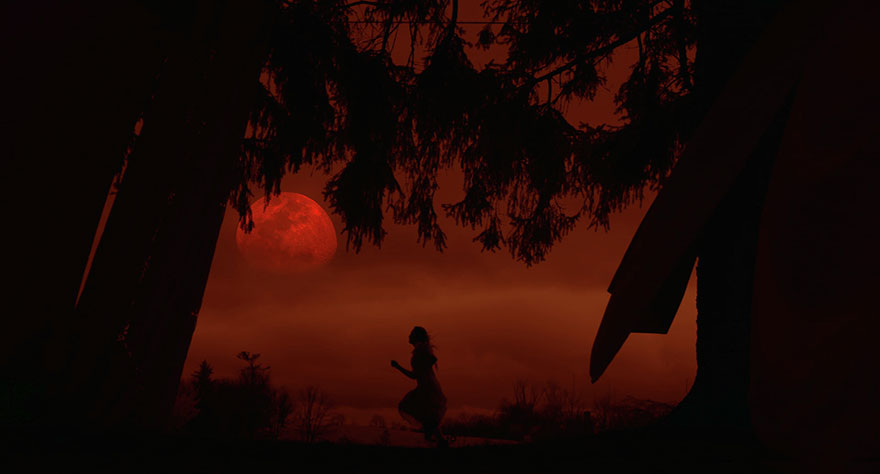
Bruce McDonald's return to horror is a lackluster, amateurish mess.

Bruce McDonald's return to horror is a lackluster, amateurish mess.
Seven years ago, Bruce McDonald surprised horror fans with his chamber piece Pontypool, which centered around a radio DJ learning about a zombie breakout happening during his broadcast in the middle of nowhere. It was an inventive and seriously impressive low-budget thriller, one that showed how much imagination can go a long way when it comes to establishing dread and tension. Now, McDonald returns to the genre with Hellions, a low-budget horror film set on Halloween in a small town. It would be unfair to expect Hellions to operate exactly like Pontypool, and McDonald seems intent on making sure he isn’t doing the same thing twice; if Pontypool was all about being low-key, Hellions dives headfirst into the world of fantasy and surrealism. But Hellions is the exact opposite in all the wrong ways: it’s stale, cheesy, amateurish, and an all-around mess—an example of what happens when a filmmaker doesn’t know how to work within their limits.
High schooler Dora (Chloe Rose) is the standard image of the rebellious teen: skipping class with her boyfriend, smoking, drinking, and planning to spend Halloween night partying hard. But a quick follow-up with her doctor (Rossif Sutherland) early in the day brings her some shocking news: she’s four weeks pregnant. Not knowing what to do, and learning it’s only a matter of time before the doctor has to legally inform her mother (Rachel Wilson), Dora decides to stay home for the evening while her mom and little brother go out for some trick-or-treating. Unfortunately, Dora’s planned night of moping around to some bad horror movies gets thrown out of whack when some kids wearing creepy masks begin showing up at her door. The kids’ actions quickly become more aggressive, until one of them decapitates Dora’s boyfriend and demands she give over her unborn baby. Much to Dora’s surprise, her day actually could get worse.
At this point, Hellions goes full-blown surreal and never comes back. Once the army of demon children show up at Dora’s door trying to break in, everything gets transported to some sort of parallel universe where the skies turn red (in order to achieve this look, McDonald shot the majority of Hellions in infrared), and Dora’s pregnancy starts accelerating at a rapid pace. An explanation for all the insanity eventually comes in the form of an exposition-spouting local cop (Robert Patrick), who explains that it’s all part of some demonic ritual to sacrifice a baby on Halloween. That sort of clunky, awkward attempt to fill in the details is just one of many issues with Pascal Trottier’s screenplay, which feels like a textbook definition of the word “lacking.” Despite Chloe Rose giving a capable and convincing performance as Dora, her character amounts to little more than a bloody, screaming horror heroine, and the lack of any characterization puts a severe damper on the rest of the film. Without giving any sense of how Dora might feel about her pregnancy, Hellions feels like a cheap attempt at shock by repeatedly harming children (granted, they’re demon children, but still) and a fetus.
But a lackluster script isn’t what really tanks Hellions; bad writing isn’t exactly a surprise when it comes to the horror genre. The big surprise here is just how awful the film looks. McDonald has been making films for a few decades now, and he’s shown how skillful he can be on a stylistic level in the past, but Hellions is packed with visuals that feel like they’re from an inexperienced straight-to-video director. The infrared look only calls attention to the cheap DV cameras used to shoot the film, along with the fact that most of the nighttime scenes were shot during the daytime. And the use of special effects, like CGI shots of a fetus or exploding pumpkins, are more laughable than anything. It’s a giant disappointment from a filmmaker who can certainly do better, and an even bigger disappointment considering his proficiency within the horror genre in the past. Given the infrared cinematography—which makes this look like an even cheaper version of Francis Ford Coppola’s Twixt—it might be best to just consider this a failed experiment and pretend it never happened.